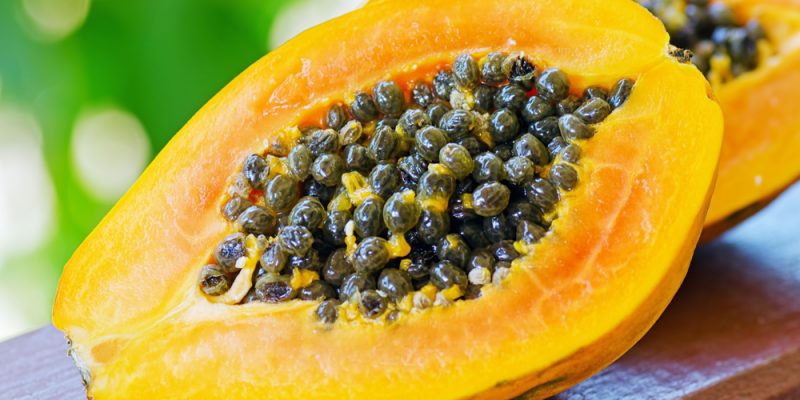Spotlight on Pawpaw
Australian’s are very familiar with the pawpaw. Not only is it the main ingredient in one of our most popular beauty/health products (Lucas’ Papaw Ointment), but it’s become synonymous with Australian tropical fruit.
We put pawpaw in the spotlight and discover some interesting facts.
Origins
Pawpaw (and papaya) is native to the tropics of the Americas, around southern Mexico and Central America. It was then spread throughout the Caribbean by the Spanish, who also carried it to Europe and the Pacific Islands.
There are now species grown throughout SouthEast Asia and Australia, with Indonesia now producing 10% of worldwide papaya production.
Did you know?
There is still some confusion around the difference between pawpaw and papaya. They are from the same species Carica Papaya, but they actually taste and look quite different.
So to make things easier for consumers and the Australian industry, the red-fleshed, sweeter fruit is called red papaya, and the yellow-fleshed fruit is called pawpaw or yellow pawpaw.
However, to make things a bit more complicated, there is also green papaya, which is either papaya or pawpaw when it is picked underripe and green.
Health Snapshot
- Pawpaw is high in dietary fibre, which supports healthy digestive function.
- On top of that, it has unique ingredients not found or found in limited concentrations in other fruits – papain and chymopapain. These are enzymes that help break down proteins and convert them into amino acids, making pawpaw an excellent digestive aid, reducing bloating and indigestion.
- It’s high in folate, vitamin A, C and E, which are important for a balanced diet.
- It is also very rich in antioxidant nutrients flavonoids and carotenes, very high in vitamin C plus A, and low in calories and sodium.
Selection & Storage
- When selecting fruits, look for ones that are mostly yellow/orange skinned with a bit of green. You can let them fully ripen at home. When fully ripe, the skin will be brighter and more uniform in colour. A few black spots or mouldy bits on the skin are okay, they won’t affect the taste of the flesh inside.
- When ripe, it should be firm to touch but yield to gentle pressure. If it’s really soft, it’s overripe. It should feel heavy for it’s size and the skin should be smooth. Use your nose as well, a ripe pawpaw will have a sweet aroma.
- To store pawpaw, keep it in the fridge to slow down the ripening process. If you leave it at room temperature, it will ripen in a few days and may quickly become overripe.
- Leave the skin on when ripening and place in a plastic bag, or wrap in plastic wrap if it’s been cut, and it will keep in the fridge for about a week.
Foodie musts
For purists, one of the nicest ways to enjoy red papaya is fresh with a squeeze of lime over it.
If you want to be more adventurous, try salmon with papaya salsa or papaw and cucumber salad with lemongrass chicken.
Or for a sweet treat, try papaya and coconut cupcakes or papaya and passion fruit fool.
